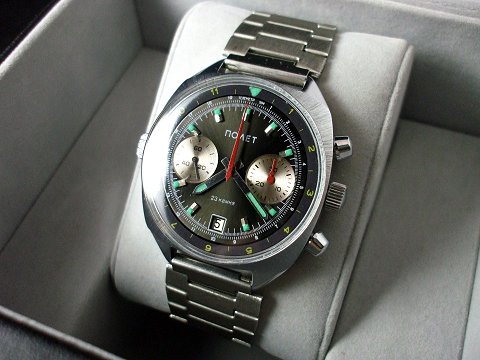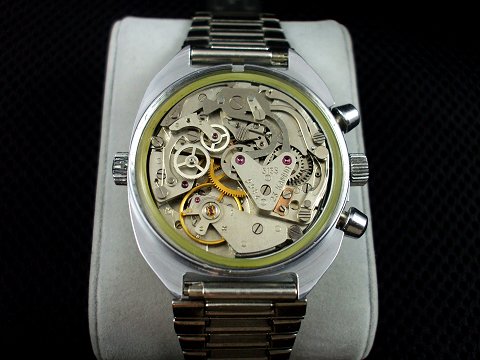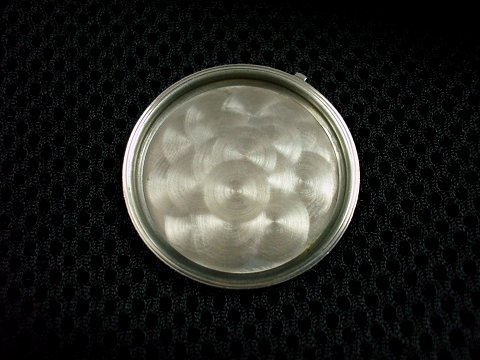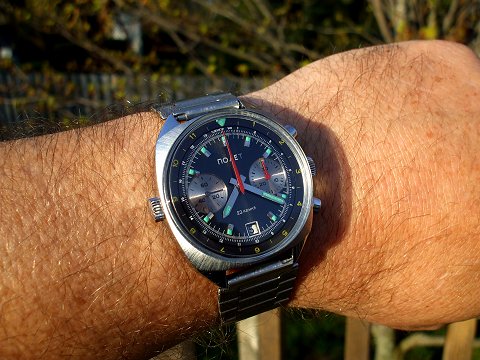Poljot Civil
Early civilian-style

A early-80s civilian model with balck sans-serif dial in mint condition. The sans-serif dial was made in the late-1980s and early-1990s for replacement purposes, such as what we have here, and was also fitted to new chronographs as seen in the 1992 Poljot catalogue.
It may be hard to imagine today, but at the time Poljot was a giant in the watch manufacturing industry and replacement parts were readily available to watchmakers. I have seen many of the original Okeah chronographs, with older-style movements, fitted with the newer-style Okeah dial in an effort to restore the watch to it's former glory. Not every repair or dial replacement is a modern-day frankenwork designed to increase the value of the watch. By the early-1990s, some of these older chronographs had been around for 15-years, and many would have been renewed/restored by there owners.
You can tell the age of the dial by checking the smoothness of the luminance. The lume used in the late-eighties/early-nineties appears to apply much smoother and has a foamy look to it, whereas the older-style lume is more dense and lumpy.
This chronograph features a chromium-plated casing with plain stainless steel case back and soviet-made/era bracelet .
Early production calibre 3133 movement

Older-stlye movements with all steel-coloured wheels are not so easy to find these days. When a chronograph-seconds, or chronograph-minute, driving wheel stem is damaged, it is almost always replaced with a newer gold-coloured wheel.
This is the last chronograph in my collection with all silver-coloured chronograph wheels as the transition to new golden-coloured wheels begins ca. 1982.
Decorated inner case back w/ swirl pattern

Some of the older chronographs had decorated inner case backs such as what we see here. I have two in my collection.
Wrist shot
